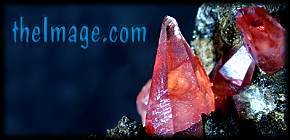
|
|
|||
|
Name: |
feldspar |
|
|||
|
Class: |
Silicates |
||||
|
Chemistry: |
(K,Na)AlSi3O8 - Ca(Na)Al2Si2O8 Metal AluminoSilicates |
||||
|
Color(s): |
white, bluish, gray, pink, blue, green, yellowish, brown, reddish |
||||
|
Hardness: |
6 - 6.5 |
SpecGrav: |
2.5 - 2.76 |
||
|
Fracture: |
uneven |
Cleavage: |
two directions |
||
|
Crystal: |
Monoclinic (orthoclase), triclinic (microcline), triclinic (albite,anorthite) |
||||
|
Envronment: |
potassium rich feldspars (Orthoclase group) are important parts of rock forming minerals, granite, granite pegmatites, carbonatites, and hornfels. Calcium rich feldspars (plagioclase group) are also important rock forming minerals, gabbro, nepheline syenites, schists, and hornfels. |
||||
|
Association: |
quartz, mica, tourmaline, topaz, garnet,augite, calcite, zeolites |
||||
|
Locals: |
| Colorado,Calif., Virginia, N.H., Maine, USA | Brazil | Germany | Italy | USSR | Madagascar | Finland | Canada | Tanzania | Madagascar | |
||||
|
Misc: |
The generic term "feldspar" comes from the Germanic term "feldt spat", meaning "mineral with prominent cleavage from the field". It was a prime constituent of many of the rocks over turned by farmers while plowing their fields. The feldspars are made up of three fundamental members and a wide number of chemical mixtures. There is the potassium rich member KAlSi3O8 (Orthoclase), the sodium rich member NaAlSi3O8 (albite), and the calcium member CaAl2Si2O8 (anorthite). These three members make up the vertices of a solid solution phase diagram. Orthoclase takes its name from the Greek "orthos", meaning "upright" and "klasis" meaning "fracture". This is due to its perfect right angle cleavage. The "albite" member gets its name from the Latin "albus" which means "white" illuding to its color. The calcium end member (anorthite) gets its name from the Greek, "an-" (meaning a negative), and "orthos" meaning "upright", ie. "not-upright" cleavage. The sodium-rich (albite) and the calcium-rich (anothite) form a continuous series of what is known as the "plagioclase" feldspars. The ratios are as follows: Albite (100) - Anorthite( 0) Albite Albite ( 90) - Anorthite( 10) oligoclase Albite ( 70) - Anorthite( 30) andesine< Albite ( 30) - Anorthite( 70) labradorite Albite ( 10) - Anorthite( 90) bytownite Albite ( 0) - Anorthite(100) Anorthite "oligoclase" comes from the Greek "oligos", meaning "little" and "klasis" meaning "fracture". "Andesine" is named for the after a locality in the Andes, "Labradorite" is named for Labrador, and "Bytownite" is named for the locality Bytown in Ottawa, Canada. "Orthoclase" composition has a variety of different crystal structures based on their temperature of formation. Adularia, sanadine, and microcline. The potassium-sodium series are known as the "potash feldspars". The name "Andularia" comes from a locality in Switzerland known as the Adula Mts., "Sanadine" comes from the Greek "sanis" and "inos", which mean "tablet" and "like". "like a tablet" from its tabular habit. "Microcline" comes from the Greek "mikos" and "klinein" meaning "small" and "to incline". The green variety of microcline is called "amozonite" and is often cut as a cabochon. The Adularia variety is called "moonstone" in the gem trade, and has what is described ad "adularescence" (a blue-white schiller effect.) There is also a variety of plagioclase that shows this same effect and is known as "moonstone" too. Labradorite may show what is called "labradorescence", a bluish to yellow schiller effect. Labradorite is sometimes found in pale-yellow, transparent crystals as is orthoclase, and both are cut into faceted gemstones. When tiny hematite or goethite platelets are trapped in feldspar it is known as Aventurine feldspar or "sunstone". |
||||
|
|
|
|
|
|
|
|
|
|